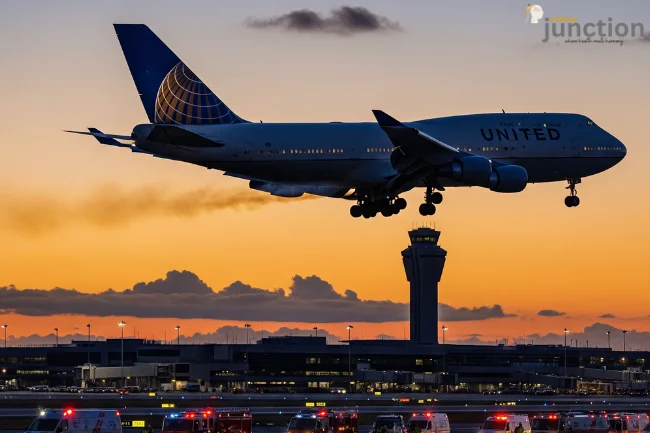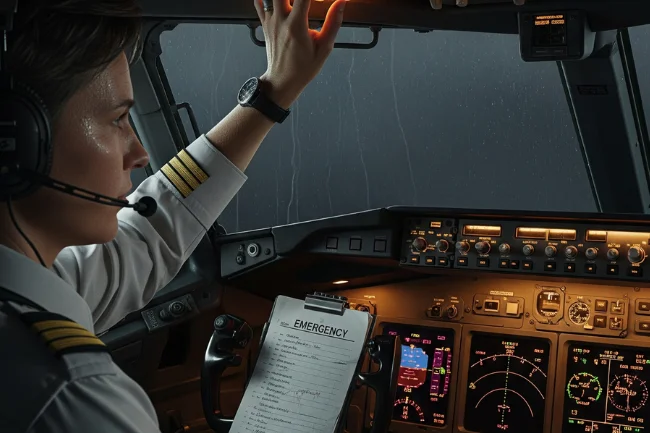When it comes to air travel, the safety of passengers and crew is the highest priority. Occasionally, unforeseen circumstances can lead to emergency diversions, where a flight’s route is changed mid-air to land at an alternate airport. An example of such an event was the emergency diversion of United Airlines Flight UA770, triggered by a technical alert while the aircraft was flying at cruising altitude. This article delves into the specifics of United Airlines Flight UA770, explaining emergency diversions, the preparation involved, and the coordination of key personnel to ensure the safety of all onboard.
What Is an Emergency Diversion?
Before diving into the specifics of the United Airlines Flight UA770 incident, it’s essential to understand what constitutes an emergency diversion. An emergency diversion occurs when an aircraft is diverted from its original flight path to land at an alternate airport due to unforeseen circumstances that could potentially jeopardize the safety of the flight. These diversions can be caused by various factors, including:
-
Medical emergencies: A passenger may require urgent medical attention.
-
Technical malfunctions: Mechanical issues or system failures may demand an emergency landing.
-
Weather-related issues: Severe weather conditions can make it unsafe to continue on the planned route.
-
Security threats: In rare cases, security threats such as hijacking or bomb threats can result in diversions.
-
Cabin pressure problems: A drop in cabin pressure may require an immediate diversion.
In the case of United Airlines Flight UA770, the diversion was the result of a technical alert. The crew’s swift and decisive response allowed the flight to be rerouted safely to the nearest available airport.
How United Airlines Prepares for Emergency Diversions
Airlines like United Airlines undergo meticulous preparation to handle emergency diversions. These preparations include thorough training for pilots and cabin crew, contingency planning, and regular aircraft maintenance. United Airlines, known for its reputation as a legacy carrier, follows a set of standard operating procedures to ensure that any diversion, emergency or not, is executed as smoothly as possible.
Staff Training
Pilots, cabin crew, and ground staff are all trained to respond efficiently during emergency situations. This training includes emergency landing protocols, managing passenger safety during a diversion, and coordinating with air traffic control and ground support personnel.
Contingency Planning
Every commercial flight is prepared for potential diversions through detailed contingency planning. This includes knowing the location of suitable airports along the flight path, understanding emergency procedures, and ensuring that all involved personnel are in constant communication.
Aircraft Maintenance
United Airlines ensures that their aircraft undergo regular and thorough maintenance checks. This includes inspecting vital systems such as engines, avionics, and cabin pressure systems. In the event of a technical issue, United’s maintenance team is immediately available to assist in troubleshooting and resolving the issue to ensure safety.
The Incident: United Airlines Flight UA770’s Emergency Diversion
On the day of the incident, United Airlines Flight UA770 was operating as a routine commercial flight when a technical alert was triggered. The aircraft was cruising at a normal altitude when a systems notification alerted the flight crew to a potential issue. Upon receiving this alert, the pilot immediately followed the standard protocol for such situations.
Communication with Air Traffic Control
Once the alert was confirmed, the flight crew communicated with air traffic control (ATC) to report the issue. In these situations, ATC plays a crucial role in assisting with flight rerouting and providing guidance for a safe and expedited landing. In this case, ATC cleared the aircraft for a diversion to the nearest available airport.
The Flight Path of United Airlines Flight UA770
United Airlines Flight UA770 typically follows a route between major U.S. airports, such as Chicago O’Hare or Newark Liberty. However, on the day of the diversion, the flight was rerouted to a nearby airport for a safe emergency landing. The diversion was handled quickly and professionally, with the crew following strict procedures to ensure the safety of all passengers and crew onboard.
Impact on Passengers and Crew
Passenger Experience During the Diversion
In the event of a diversion, passengers often experience heightened stress and uncertainty. However, the professionalism of the United Airlines cabin crew played a vital role in maintaining calm during the incident. Passengers were kept informed throughout the situation, and the cabin crew worked diligently to ensure their comfort and safety.
Upon landing, passengers were either transferred to a replacement aircraft or accommodated at the diversion location until their travel could resume. In such cases, airlines like United Airlines typically offer compensation, including meal vouchers, hotel stays, and priority rebooking, to help mitigate the inconvenience caused.
Response of the United Airlines Flight UA770 Crew During the Emergency
The decisions made during an emergency diversion are primarily the responsibility of the pilot-in-command, who consults with air traffic control and airline operations. In the case of United Airlines Flight UA770, the crew acted swiftly to ensure a safe diversion, demonstrating the importance of training, professionalism, and the ability to remain calm under pressure.
The Role of the FAA in Emergency Diversions
In the United States, the Federal Aviation Administration (FAA) plays a crucial role in overseeing aviation safety, including incidents involving emergency diversions. Any diversion that occurs within U.S. airspace is required to be reported to the FAA. In response to such events, the FAA may conduct an investigation to determine the cause of the emergency and ensure that any necessary corrective actions are taken.
Post-Incident Review
After an emergency diversion, the involved aircraft undergoes a thorough inspection by maintenance engineers. This includes reviewing flight data recordings, aircraft logs, and crew reports. The goal is to determine what triggered the technical alert and to address any underlying issues that may have contributed to the incident.
The FAA may also review passenger statements and other relevant information as part of the investigation. If the incident is determined to be related to a mechanical issue, steps are taken to prevent similar incidents in the future.
Why Redundant Systems Are Crucial for Aircraft Safety on United Airlines Flight UA770
One of the key factors that contributes to the safety of air travel is the presence of redundant systems in aircraft. These systems guarantee that the aircraft can still function safely, even if one part fails. In the case of United Airlines Flight UA770, the technical alert likely indicated a minor issue that could have been resolved without jeopardizing the safety of the flight. However, the presence of redundant systems allowed the crew to identify the problem and take corrective action without delay.
Clear Communication During Emergencies
Clear and timely communication is essential during any emergency, including diversions. Passengers need to be kept informed about the situation, and airline staff must be able to communicate efficiently with air traffic control and ground support. United Airlines, as a reputable carrier, is known for its transparency and commitment to passenger safety, ensuring that updates are provided throughout the diversion.
Final Thoughts: United Airlines Flight UA770 and the Significance of Safety Protocols
The diversion of United Airlines Flight UA770 highlights the intricate and meticulous nature of contemporary air travel. The incident highlights the importance of well-established procedures, thorough crew training, and the role of redundant aircraft systems in ensuring the safety of all onboard. While emergency diversions are rare, the professionalism displayed by United Airlines in handling the situation reassures passengers that their safety is always the top priority.
In the world of aviation, incidents like United Airlines Flight UA770 reinforce the strength and reliability of safety protocols. Airlines, crews, and air traffic controllers work together to manage and mitigate potential risks, ensuring that air travel remains one of the safest modes of transportation.
FAQs About United Airlines Flight UA770
What was the reason behind the diversion of United Airlines Flight UA770?
The diversion was caused by a technical alert while the flight was cruising at altitude, prompting the crew to take immediate action.
How does United Airlines prepare for emergency diversions?
United Airlines ensures that pilots, cabin crew, and ground staff undergo rigorous training and contingency planning to handle diversions safely.
What happens to passengers during an emergency diversion?
Passengers are kept informed by the cabin crew, and upon landing, they may be transferred to a replacement aircraft or accommodated at the diversion location.
Does the FAA investigate emergency diversions?
Yes, the FAA conducts investigations into emergency diversions to ensure safety and identify any mechanical or procedural issues.
What role do redundant systems play in aircraft safety?
Redundant systems are backup components that ensure the aircraft can continue operating safely, even if one system fails.
Learn About Pragmatic Juara100.org Medal

Ton Roobprom is an experienced writer focused on practical advice across technology, business, travel, beauty, lifestyle, and home improvements. He specializes in distilling complex subjects into clear, actionable insights to help you enhance your daily life.




